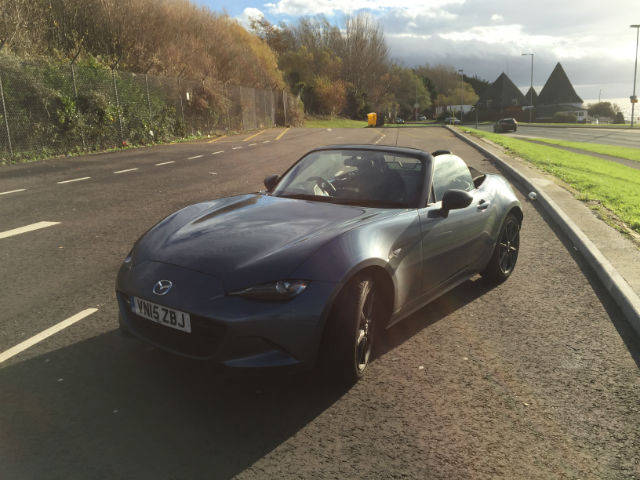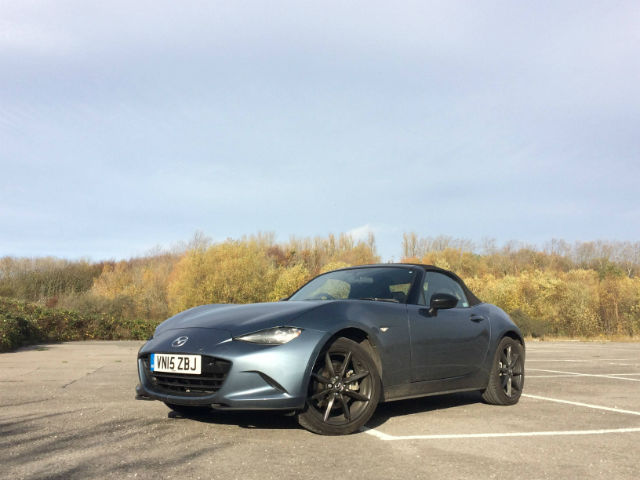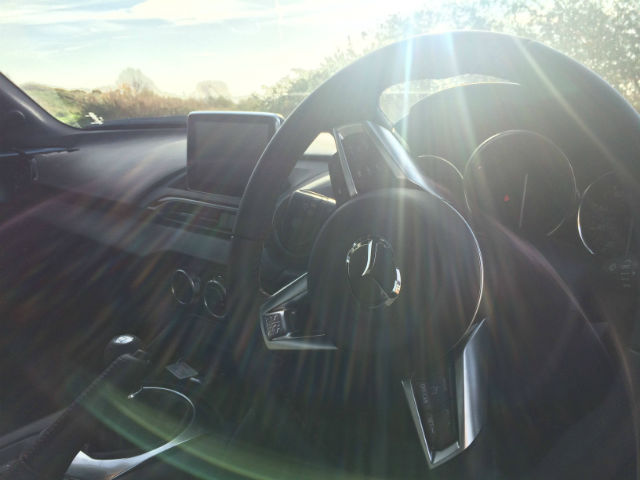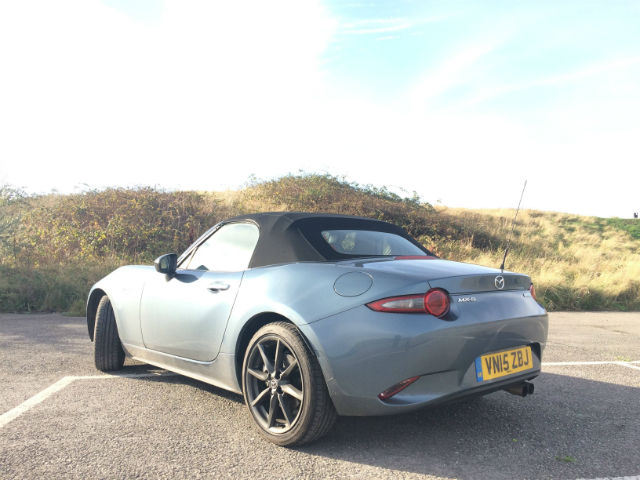It’s kinda funny how that, for a country which doesn’t get all that much sunshine during the typical year, Britain just can’t get enough of convertibles.
According to statistics, Brits buy more drop-tops than the French, Spanish and the Italians, but in the context of our native climate, the enthusiasm for al fresco motoring does seem a little ill-fitting.
Then again, perhaps that’s exactly the reason that convertibles are so popular?
When you think of a soft-top roadster, the typical sort of image that springs to mind is probably one of sun, sand and sea: think Audrey Hepburn in an Autobianchi Bianchina Special Cabriolet somewhere on the French Riviera.
Point is, when you think of a small, two-seater roadster, you think firstly of freedom and fun. Maybe it’s a little bit of escapism on behalf of the nation, but then what’s so wrong with that?

It’s not just a figment of the imagination, though. Britain has had a rich history of producing some of the best-loved convertible roadsters ever made, including the Coventry-built Triumph Spitfire and the Lotus Elan, which was manufactured in Norfolk.
Unfortunately, as time crept on and Britain’s motoring exports dwindled, the classic British roadsters of old have largely found themselves relegated to the history books.
Just as the last remnants of British industry started to tail off towards the end of the 1980s, so too the roadster temporarily fell out of fashion with motorists. But not for long…
Enter the Mazda MX-5, probably the most British Japanese car ever manufactured. Originally conceived as a spiritual successor to the classic British roadsters of old, the Spitfire and Elan among them, the introduction of the MX-5 would prove to be one of the watershed moments in recent motoring history.
Built at Mazda’s Hiroshima plant, the very first MX-5 made its debut at the Chicago Auto Show in February of 1989, and at the time gave the current trends a severe bucking.

The popularity of the two-seater sports car had already began to wane in the latter half of the 70s, and by the time the MX-5 arrived, the format was virtually extinct. That didn’t stop the little MX-5 from being a runaway hit, however, and more than a quarter of a century later it’s still being produced.
In fact, it’s doing better than still being produced; the Japanese underdog has since risen to become the most popular two-seater roadster on the planet. It’s so successful that it attracted the attention of Guinness World Records, who officially crowned it with its very own record in May 2000, when 531,890 of the things had been sold.
Over 15 years later and the MX-5 still holds that title with pride. Four years ago, the number of MX-5s produced by Mazda passed the 900,000 mark, and such is its enduring popularity that the millionth model is estimated to be built this year.
So what’s the secret behind Mazda’s success? The British might have come up with the idea of a light two-seater convertible, but as the money and facilities to realise it started to dry up, it was Mazda who really capitalised on the format’s potential.

If you’re a driving enthusiast, it’s pretty much a given that you’ll like the MX-5, with its relatively simple design belying what’s realistically one of the all-time best driver’s cars.
It’s cheap to buy compared to other sports cars, and also inexpensive, quick and easy to repair if a part breaks. Not that it should; after all, the entire Japanese car industry broke into the global market thanks to its reputation for building solid products.
More importantly, if you have an MX-5, you will have fun. Lots and lots and lots of fun. Well balanced, and with just enough power for its size, the MX-5 is one of the most accessible and engaging road cars around, capable of making even the most middle-of-the-road motorist feel like an action hero.
Even with a soft-top roof, it’s a lot of fun even if the weather isn’t so great. The top can be folded up and down in seconds thanks to a handy latching system, and excessive wind noise and water leaks are pretty much non-existent, even when driving at speed.
The combination of light weight, direct steering and a feisty motor has largely stayed untouched for the past 25 years, even if the MX-5 did start to put on a little weight in its second- and third-gen iterations.
Here’s the thing, though. Thanks to Mazda knowing better than to mess with the formula, even older models are just as good to drive as more modern versions. They’re also cheap to insure, as the Mk1 is now classed as a classic car and as such can be obtained on classic car insurance.

Depending on which company you go with and your mileage estimates, average cost of insurance clocks in at around £150 or lower. Older Japanese import models often have higher specification and lower mileage than anything that’s lived most of its life in the UK, and can often be as good as new if you’re lucky enough to find one.
They can be pricey, though, but pricey for an MX-5 is still incredibly cost-effective when compared to virtually any other sports car. Even a brand-spanking new fourth-gen model straight off the production line will set you back a measly £18,495 for the basic model.
Joint-developed between Mazda and Fiat, which had some input on the looks, the newest MX-5 manifests itself with a redesigned exterior that looks slightly sharper and angrier than before, good news if you were worried about the hairdresser stereotype. Which you shouldn’t be.
Shorter, lower and wider than the outgoing model, it’s also the lightest version since the original Mk1, with Mazda kitting it out all in lightweight aluminium for the bonnet, front wings and boot lid.
As a result, it sheds around 100kg in weight over its predecessor, while the car’s centre of gravity has been lowered to further enhance the telepathic handling that’s made the MX-5 a drivers’ must-have for the past 25 years.

It also comes with SKYACTIV technology, Mazda’s popular fuel-efficient engineering traits, for the first time ever, and it’s one of the rare few cars which reportedly can manage fuel economy better than the manufacturer officially claims it can.
Engine options include a 129bhp 1.5-litre or a larger 158bhp 2.0-litre, both of which are naturally aspirated and come with a six-speed manual gearbox - just what the doctor ordered for enthusiasts.
0-62mph times clock in at an official 7.3 seconds for the larger engine, with a top speed of 133mph, but in honesty, if you’re the sort of person who obsessively cares about numbers on a sheet, then as far as the MX-5 is concerned, you can bore off.
Forget economy, forget about engines and throw the spec sheet out the window. This isn’t the sort of car that anybody drives for the numbers, and nor is it the sort of motor that people will take pictures of in the car park and demand to see what’s under the bonnet.
Ultimately, the MX-5 is about the lived experiences that go on inside your head while you’re blipping the throttle around a hairpin. Between you and the car, the joy attached to every bend and B-road twist knows no bounds.

Every dump of the clutch is a taut pang, symbiotic with your heartbeat. The cold, rushing tingle as you floor the accelerator up a straight feels like a set of fingers gingerly rolling down your back. The speed builds, the melody of the engine ebbs back and forth like a tide teasing the shoreline and, despite the world, you’re racing like the greatest of F1 champions.
It doesn’t even matter than you’re probably pootling along at 60mph, because it simply feels that good. This is the magic of the MX-5, taking the ingredients of the original British roadster and bettering them, transforming them into a four-wheeled technicolour embrace of sound and sensation.
Bad British weather be damned. The question isn’t “Why would you buy an MX-5?”, but rather “Why the bloody hell wouldn’t you?”




